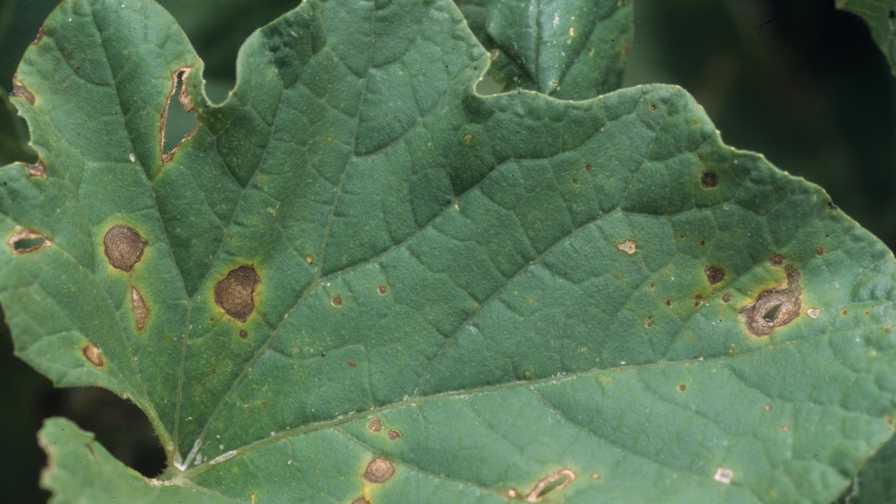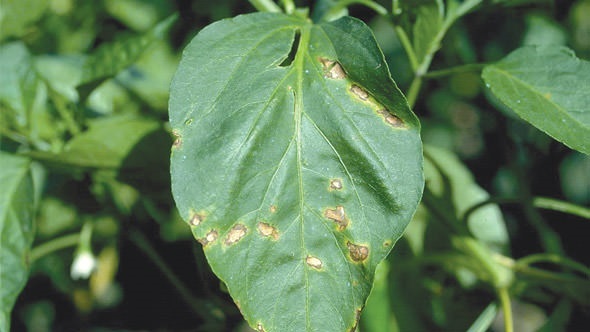Alternaria Leaf Spot Awareness Can Save Your Cucurbit Crops

Photo by Gerald Holmes
Disease Specs
Alternaria leaf spot of cucurbits is caused by the fungus Alternaria cucumerina. Cantaloupes and watermelons are most susceptible, but squash, cucumbers, and other cucurbits might be affected. Plant vigor and fruit quality may be reduced if this disease is not controlled.
Identification
Alternaria leaf spots typically appear on older leaves and spread to the newer leaves toward the tips of the vine. Leaf spots begin as bright- to pale-yellow or tan flecks on the upper leaf surface. These small spots may be surrounded by light-green or yellow halos. At the early stage, these flecks might be surrounded by a water-soaked area due to cell wall breakdown within the leaf by the fungus. In time, the spots enlarge in diameter.
The older spots are circular- to irregularly shaped and are light brown/black in color. Older spots may or may not have concentric-rings. Darker bands within a spot contain spores that are dispersed by wind.
Individual spots become brittle and may tear and appear ragged within the darkened tissue. If the disease becomes severe, leaf curling, defoliation, premature ripening, lower yields, reduced sweetness, and fruit deformity can be the ultimate results. Defoliation also predisposes fruit to sunburn.
Alternaria leaf spot can occur along with gummy stem blight and may be similar in appearance. Downy mildew and Cercospora leaf spots also can occur simultaneously with Alternaria leaf spot, but these leaf diseases are usually distinguishable from Alternaria leaf spot. In cantaloupe, young Alternaria lesions can resemble downy mildew. If control measures for these diseases are not initiated early in the season, a grower could have epidemics of all four diseases on the leaves simultaneously.
Fruit infection is not common, but can occur if the leaf phase of Alternaria leaf spot is not controlled, especially on melons other than watermelon.
Survival and Spread
A. cucumerina survives in or on crop debris, cucurbit weeds, volunteer cucurbits, and seed. Leaf debris left on the soil surface or buried to shallow depths is capable of regenerating spore production for more than six months. A daily temperature variation of 68°F to 90°F is ideal for disease development. The length of time leaf wetness occurs influences infection rates. Some infection may occur with two to eight hours of leaf wetness, but when leaves are wet for 10 to 24 hours, the infection rates increase drastically. Rain frequency and length of dew periods are more influential than amounts of rain.
Management Methods
Growers should begin and maintain a spray program with fungicides when nighttime temperatures exceed 60°F, especially when long periods of leaf wetness occur. Plowing down crop debris soon after harvest will help reduce available inoculum for the next season.
Cucurbits planted during winter months in South Florida are prone to infection for most of the season except during prolonged cold periods. Spray intervals may need to be shortened during ideal weather conditions, especially as new plant growth becomes exposed.
Consult UF/IFAS recommendations for currently labeled fungicides for Alternaria leaf spot in cucurbits.










